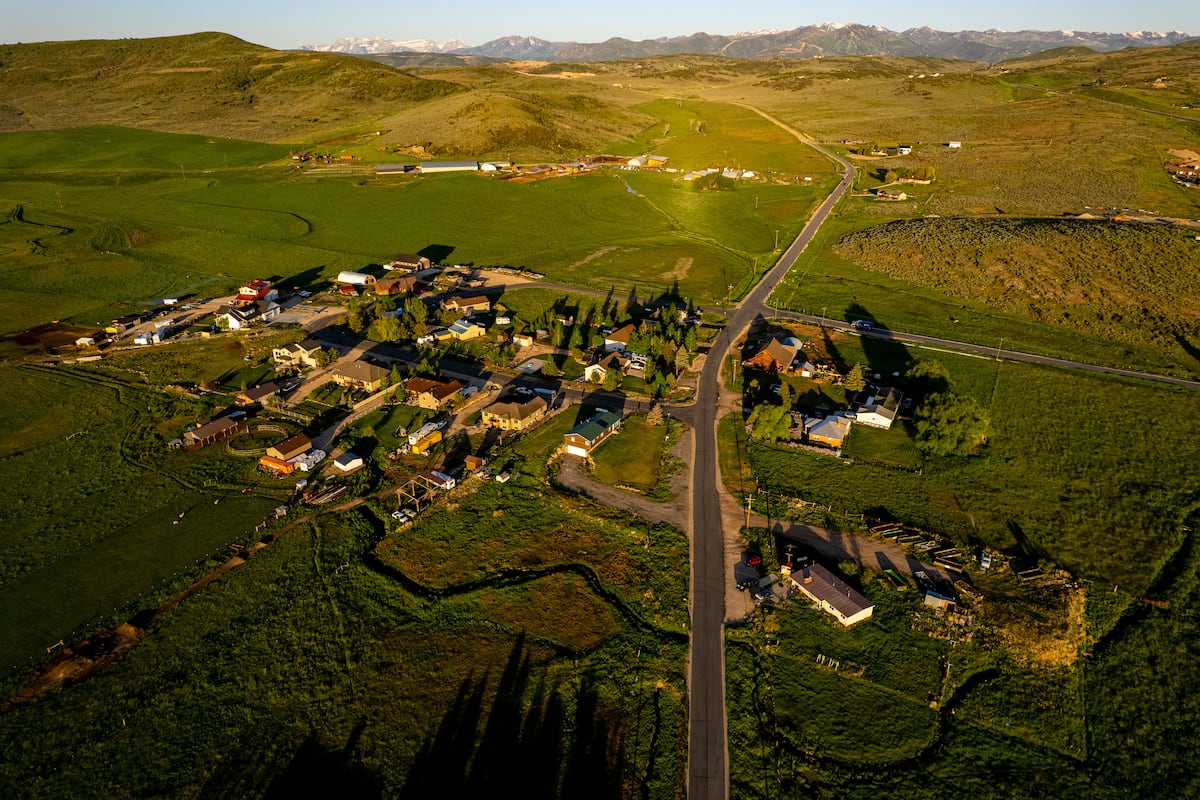Copyright Salt Lake Tribune

A contentious election over whether to create a new town on a stretch of rolling hillsides near Kamas is officially off after the Utah Supreme Court refused Tuesday evening to reverse a lower court decision blocking the vote. The ruling means that the vote on whether to incorporate Summit County’s West Hills — which had split residents who cherished their rural lifestyle and those who wanted more latitude to divide and develop their property — will have to wait until at least next year. The decision came hours after the justices heard arguments from an attorney for Derek Anderson, the developer proposing the new township, urged the court to let the voters — who had already received ballots — decide West Hills’ fate. A week from Election Day, Justice Paige Petersen acknowledged the court needed to act quickly — which it did, issuing a brief order declining to intervene and letting stand a lower court ruling voiding the election. “Under the unique circumstances of this case,” the justices wrote in the unsigned order, “petitioner has not persuaded us to exercise our discretion to grant extraordinary relief, given the potential disruption to the election process by issuing a writ at this juncture.” The court said it plans to issue a detailed ruling at a later date. “It’s obviously disappointing property owners won’t have a voice this election cycle and outside influences with deep pockets have used the courts to stop the vote,” Anderson said in a statement. “The law and process for incorporation was followed and the precedent from the district court will have major ramifications as the state continues to struggle with growth.” The initial ruling Two weeks ago, 3rd District Judge Matthew Bates voided the election, ruling that the state law governing the creation of cities and towns is unconstitutional since it lets some landowners opt out of the town’s boundaries but denies others who are added to the map later the same exclusionary rights. Bates ruled that the Utah Constitution requires the law to treat similarly situated individuals the same and that the disparate treatment in this case was arbitrary and unwarranted. Anderson’s attorney, Caroline Olsen, argued that Bates was wrong in his ruling, that the law is constitutional and that the election should be allowed to proceed. If the Legislature has a rational reason for setting a deadline for exclusion, she argued, the courts should give deference to that policymaking prerogative. In this case, Olsen said, lawmakers set a deadline for landowners to withdraw from a proposed town so the process doesn’t bog down in never-ending feasibility studies and shifting boundaries. Having met the requirements, Olsen said, the voters should get to decide. Janet Conway, the attorney for a group of landowners opposing incorporation, told justices that voters in the proposed township had been notified by the county clerk that the election was off. Opponents had taken down signs and stopped their campaign against it. “The election is completely compromised,” she said. If the justices decided to reverse Bates and allow the election to take place, Conway had vowed to seek a restraining order contesting the vote and challenging several aspects of it — including a suspicious spike in registered voters. Conway told the court that the number of registered voters in the boundaries has ballooned from 47, when the measure was certified, to 96 today, with more than half coming in the past 30 days. Asked after the hearing about that jump in registrations, Conway alleged that people were moving into tents and trailers on property within the proposed boundaries to register to vote — which she said incorporation opponents would challenge. “We don’t have access to the latest voter data so it’s not totally clear who all of the new registered voters may be,” a spokesperson for Anderson said, “but it’s clear there’s increased interest in the vote.” How the battle began The incorporation battle over West Hills had laid bare the tensions between those who moved to — or set up second homes — in the Summit County mountains and the development pressures that have encircled the pastoral hillsides. Anderson proposed the creation of the town in 2023. It is sandwiched by the towns of Hideout and Kamas, not far from Jordanelle Reservoir, on an expanse of rolling hills that used to be Garff Ranches. The sprawling space was partitioned into 40-acre lots in the 1990s, and while people could build a home, cattle could still roam and graze until they were moved into the Uinta Mountains for the summer. Residents maintain their own roads, water and garbage collection and have a volunteer fire department. Anderson argued incorporation would give residents more flexibility and control over land use decisions, including potentially dividing lots. The original proposed boundaries were fairly contiguous, straddling State Route 248. After an initial public hearing, about 50 landowners exercised their right to be excluded from the township and a new map was drawn. That map was rejected by the lieutenant governor’s office because it fell three residents short of the 100 people required to form a town. A third attempt at a map tacked on peninsulas and carved out unincorporated property that would be almost entirely surrounded by the proposed town. Summit County’s development director critiqued the plan, saying it lacked an obvious town center and included “somewhat arthritic fingers” of property that would make it more difficult to provide services. But under state law, those who were added to the final map — residents like Jen McCaffrey — didn’t have the same right to exclude their land as those in the original map. As the owner of a second home, McCaffrey also didn’t have a right to vote in the election. So she and other incorporation opponents sued, contending they had been unconstitutionally deprived of rights others enjoyed. Bates agreed, ruling that “the disparate treatment is manifest” and that identically situated landowners “are treated differently based on one arbitrary factor,” the timing of their inclusion in the boundaries. How might this affect other incorporations? During Tuesday’s arguments, Justice Petersen suggested the on-again-off-again nature of the election may have created “some real prejudice to the plaintiffs here.” Told by the county clerk the election was off, they paused their anti-incorporation campaign for 10 days before Anderson appealed, “which were pretty important days in terms of getting the message out,” Petersen said. “Why not say this has to happen in 2026 because it got too messed up?” the justice asked Olsen. Olsen responded that the justices should correct the error of the lower court and put the “properly certified measure before voters.” The opponents opted to halt their opposition campaign. “It may have been right or wrong,” Olsen said. “It is, in some sense, self-inflicted.” Justice Diana Hagen asked Olsen if a decision to reinstate the election would spawn a new round of litigation, to which Olsen said that additional litigation is “inevitable” — either in the West Hills case or because of uncertainty it may create around other incorporation petitions.



